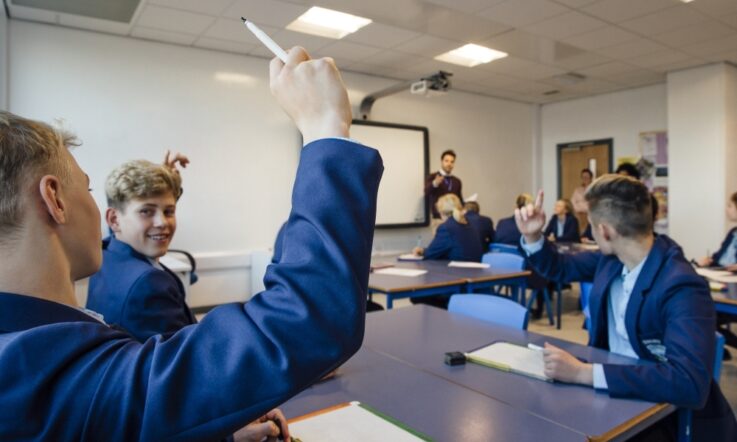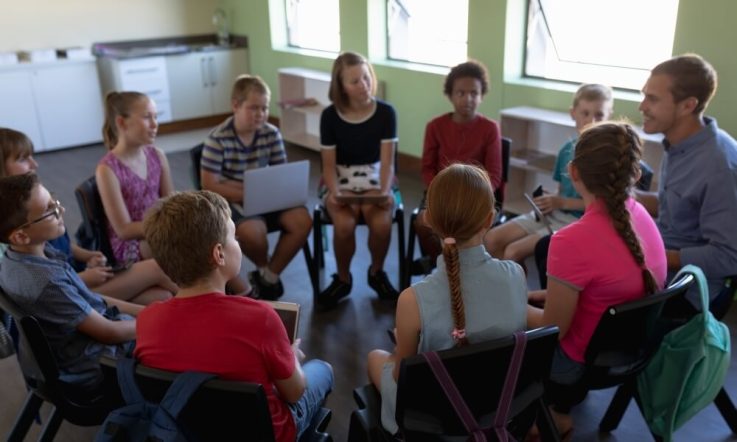Have you ever asked your students for advice on how you could help them to get more engaged in learning at school? That is exactly what Dr Amy Berry and Dr Kellie Picker did in their recent study, Student perspectives on engaging in learning at school. In part one of their 3-part series for Teacher on student engagement, the authors explore students’ top tips on how teachers could help them get more engaged in learning.
As part of the Student perspectives on engaging in learning at school study, we ran a series of focus groups with 158 students from Prep to year 12 to explore their thoughts and experiences as learners. Along with being the most fun we have had doing research, the focus groups were enlightening with the students generously sharing their insights and thoughtful observations about learning at school.
At the end of each focus group, we asked students to share their top tips on how teachers could help students get more engaged in learning at school. It turns out they have given this a lot of thought and came prepared for the chance to share their thoughts. Spoiler alert – they didn’t say they wanted to play games all day.
Top 5 tips for better engagement
1. Be engaged
A key to actively engage learners is to be an actively engaged teacher. Students told us they want to see our passion for what we do and our interest in the content we are teaching them.
‘If you can tell your teacher actually really enjoys the subject and enjoys teaching, I think they can give off that vibe to a lot of their students, and I think that's a big thing I look for in teachers.’
They get inspired by our enthusiasm and enjoyment, and that can turn them onto a topic or subject that they didn’t think they were interested in before. Our enthusiasm helps to energise their own motivation and desire to get engaged, and the absence of our enthusiasm can deplete their motivation and negatively impact their capacity to learn.
‘What really motivates me is if the teacher is excited to teach the subject, if they actually like that subject. If you're learning a subject and not even the teacher is interested in it, that's hard because it gives you no motivation. When a teacher doesn't really care about what's being taught, it means the students aren't going to learn.’
Key takeaway: Make it a point to tap into your own interests as you prepare for lessons and be ready to share that with your students. Your enthusiasm sets the tone for theirs.
2. Be engaging
Students know that sometimes learning involves doing things that are not that fun or enjoyable, but that doesn’t mean teachers can’t do things to make learning more engaging for students.
For example, making a game out of revising key concepts or ideas instead of a worksheet or PowerPoint presentation. They also understand that teachers don’t always have control over what they teach, but they can decide how they teach it.
‘It's not what they teach, they have to stick to what they have to teach. But maybe they can change how they teach it. Like change it up a bit…instead of always sitting and staring at a whiteboard.’
We can create more engaging learning experiences by thinking about ways we can make the content more interesting or relatable, and mixing things up rather than doing the same thing in the same way every day.
Along with that, we can help students feel inspired to engage when we show that we are approachable, fair and receptive to their ideas, questions, concerns and needs. This is especially important when they need help to get involved in what they are learning.
‘If I ever feel like I need help with something then I feel like if I'm more comfortable with the teacher, it's easier to ask for help.’
Key takeaway: Try to see things from the students’ perspective and think about what you could do to help them get more engaged in what they are learning. Be open to their feedback and requests and be prepared to adjust things if needed.
3. Help us get actively engaged
Students told us they want to be actively engaged in what they are learning and not just stuck in passive participating mode all the time. They expressed an interest in learning about learning and discovering what works for them as a learner.
They appreciated when teachers understood their needs, for example knowing when a brain break might help them to re-engage. Finally, the students understood the value in being able to work at their own level. Here, students noted that when asked to do things that are too hard or too easy, it is hard to get actively engaged.
‘We like teachers who see people for who they are, and they don’t make everyone do the exact same thing. Allowing students to [do] different but similar things allows us all to learn.’
Some of the tips students shared included:
- Explain things clearly, but don’t talk too much because it takes away from the time we have to get actively engaged.
- Add in more opportunities for interacting, being creative and exploring our interests.
- Help us connect the things we are learning to our life outside the classroom.
- Give us a chance to work on bigger projects that give us more responsibility and time to get really engaged in what we are learning.
Key takeaway: Work with students to create learning experiences that help them move beyond passive participating, so there are opportunities for them to invest in or drive learning. Don’t leave it to chance, make it an intentional part of the process.
4. Engage with us
Relationships are at the core of learner engagement and the student responses suggest they are very aware of the importance of feeling a sense of connection with their teacher. This included feeling valued, understood, supported and safe, but also challenged to grow and improve. Students don’t want us to make things easy for them, they want us to believe in their capacity to achieve and grow as learners.
‘In my eyes, a teacher who cares genuinely about a class, who actually has that genuine sense of care, I find those teachers more motivating in my eyes. They understand me more. And those are the kind of teachers I guess, in a sense, I look up to because they are my hugest motivators. I feel like I know them as people, rather than just a name tag.’
Key takeaway: Make it a priority to connect with students and show them you care about them and believe in their capacity to learn and grow.
5. Listen to us and trust us
Active engagement involves agency and voice. That is, students expressed their desire to have a say in what they learn and how they learn, so they feel empowered to take actions that increases engagement, which in turn helps them achieve their learning goals.
Students had several suggestions for how we can support them to be actively engaged and empowered learners, including:
- Give us a choice in what we do and how we do it.
- Ask us about our learning and engagement rather than assuming you know what is going on.
- Give us a chance to take the driver’s seat during learning.
- Let us design our own homework!
- Ask for our advice and suggestions on how to make things more engaging and be prepared to take it on.
Key takeaway: Make a habit of seeking feedback from your students, don’t assume you know what is going on for them. Help them to get into the habit of thinking like a learner and making decisions about their own learning.
Overwhelmingly, the Prep-Year 12 students expressed a desire to learn and to be involved in engaging learning experiences. They like to be challenged and find it motivating to have a teacher who is engaged, engaging, and who believes in them and their capacity to grow and learn.
Stay tuned: In part 2 of this series on engagement, Dr Amy Berry and Dr Kellie Picker share student perspectives on learning at school, and explore what it means to be a good learner.
Think about an instance where you have taught something that wasn’t particularly fun for students. How did you approach it? What were some of the ways that you tried to make the learning more engaging for students?
The authors encourage educators to seek feedback from students on their learning. How do you help students to make decisions about their own learning? What impact does this have on their overall engagement?



